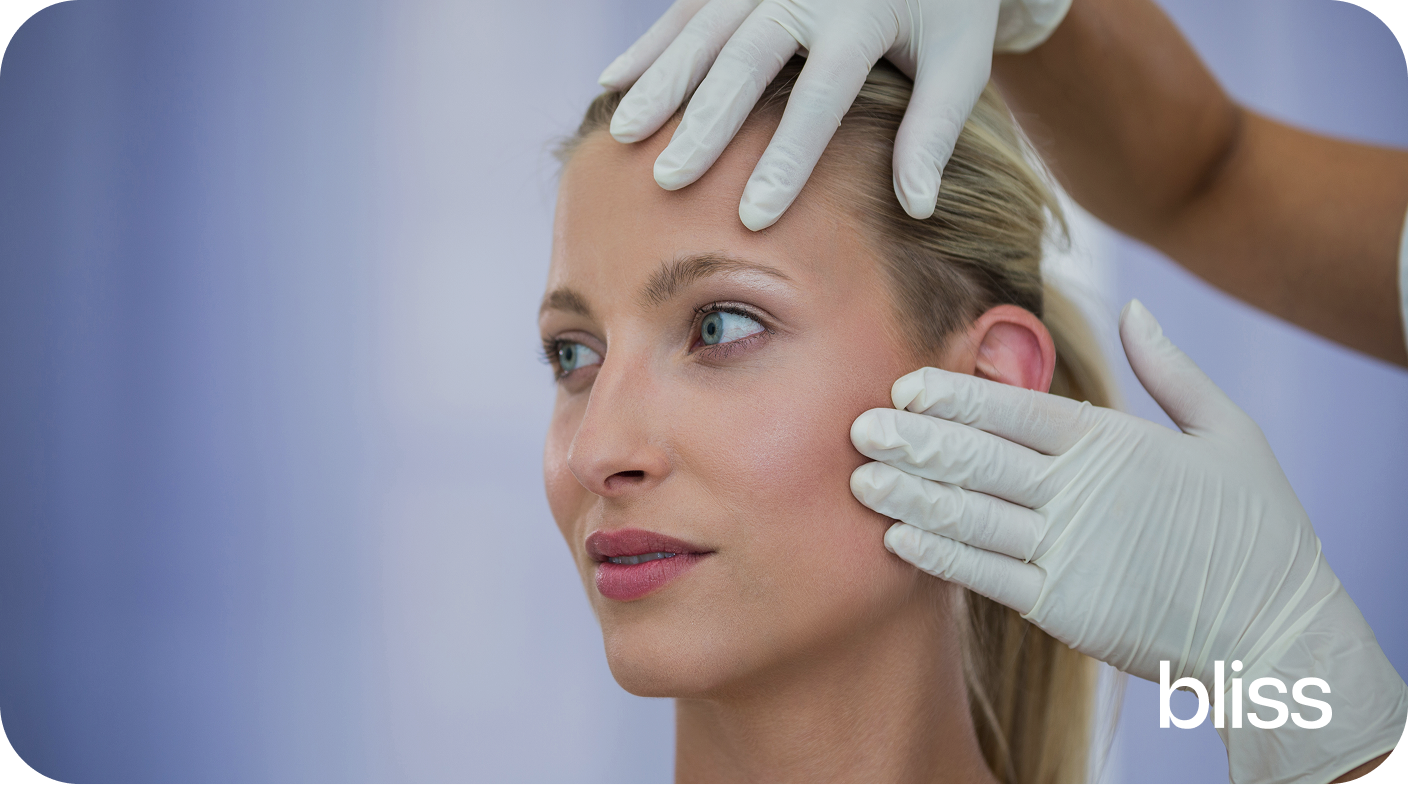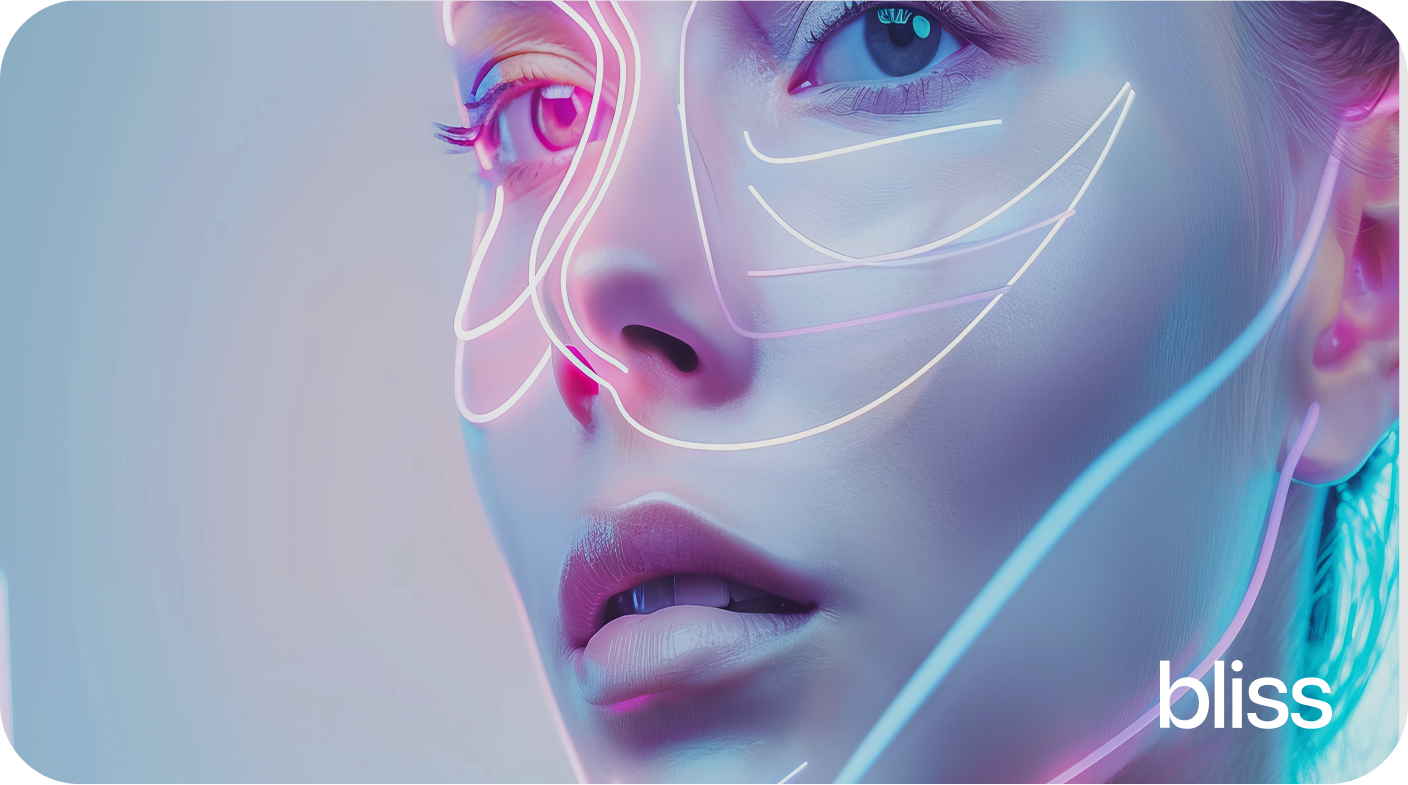AI Previews vs. Reality: Can Tech Predict Your Cosmetic Results?

Booking a cosmetic procedure used to involve a leap of faith. Patients would imagine how they might look post-op, but there used to be an air of uncertainty. Enter AI-powered imaging and simulations: tools that promise to “preview” surgical outcomes. But how do these tools work? And how do we use Bliss Imagine’s AI power responsibly to align expectations with reality?
How AI Previews Work: The Technology Behind the Magic
Generative Models & GANs
Generative Adversarial Networks (GANs) are used to morph images into predicted “after” images. Research shows that GANs can improve simulation over tens of thousands of training cycles. For example, a recent study uses a GAN-based outcome simulator in rhinoplasty, improving its realistic images with more generated versions of it.
Age Estimation AI
Some AI tools go beyond shape; they estimate perceived age via convolutional neural networks (CNNs). In a study of lower blepharoplasty (eyelid surgery), AI estimated that patients looked roughly 2 years younger post-op, on average. Another example: after facelift surgery, AI age-prediction models saw a 3–5 year “younger” shift depending on follow-up.
Clinical Validation & Limitations
While AI simulations are powerful, they are not perfect predictors. Biological healing, patient-specific tissue response, and surgical technique introduce variability in results. A “preview” can create over-optimistic expectations if not properly presented or framed. Also, there’s a phenomenon known as Snapchat dysmorphia, where people want to look like their filtered selves. AI previews can risk fueling unrealistic desires.
How Bliss Imagine Actually Works
Bliss Imagine starts with your vision. You share your goals, aesthetic preferences, and what you hope to achieve, and this becomes the foundation for a preview tailored specifically to your anatomy, not a generic template. Your Care Advisor guides you through the process, handling your photos with empathy and ensuring the experience feels personal, judgment-free, and genuinely supportive.
Using advanced generative AI, Stable Diffusion, and computer vision, Bliss Imagine creates hyper-realistic previews that blend your natural features with your desired outcome. These simulations are meant to inspire and clarify, not guarantee perfection.
Your preview then becomes a powerful tool for surgeon matching. Bliss uses it to match you with a board-certified surgeon whose aesthetic style and expertise align with your visual goals. By the time you reach your consultation, you have a personalized preview, a clear treatment direction, and a team that uses technology responsibly to set realistic expectations while empowering your journey.

The Upside: How AI Previews Actually Help
Regardless of the gap between prediction and reality, AI visualizations bring real benefits:
- Improved Communication: Surgeons and patients can use AI images to discuss “what if” scenarios more concretely, refining surgical plans together.
- Expectation Setting: Instead of vague promises, patients can see a visual possibility, which helps ground their expectations.
- Objective Metrics: Tools like age-estimation AI provide quantifiable data (e.g., how many “years younger” someone may look).
- Faster Consultations: Some AI systems can generate previews quickly (in milliseconds), meaning shorter and more efficient pre-op planning.
- Risk Reduction: By clarifying visual goals earlier, AI may reduce the chance of major mismatches between patient hopes and surgical reality, maybe even reducing revision rates.
How Bliss Imagine Manages Expectations (and Why it Matters)
Bliss uses AI not as a promise but as a tool for clarity, alignment, and shared decision-making.
Educational Pre-Op Consults
Bliss Imagine’s AI-powered previews help patients visualize potential outcomes, and we always frame them as simulations. Our Care Advisors and surgeons review the AI images with each patient (“Here’s what this preview suggests; here’s where reality may differ based on your anatomy”) to set realistic expectations.
Goal Alignment
Before booking surgery, we ask patients: “Which simulation resonates with you? Subtle changes, more dramatic, conservative optimizations?” This ensures we are aligned on vision and feasibility. If there’s a mismatch (patient expects something the simulation can’t support), we talk openly about what’s surgically realistic.
Psychological Safety Net
If we sense a patient is being overly influenced by idealized images (AI or otherwise), we take steps: more guidance, slower decision-making, and re-imagined photos if needed. We ensure that AI consultations include a disclaimer: “This is a predictive tool. Final results depend on many biological variables and your surgeon's recommendations or expertise.”
The Future With Bliss Imagine
AI-powered previews are powerful. They offer patients a visual, data-driven way to explore potential cosmetic outcomes.
With our tool, Bliss Imagine, we view AI as a collaborative resource. Our goal is to use it to educate, align, and ground patient expectations. By combining high-tech simulations with expert surgical judgment and honest conversation, we aim to help patients make confident decisions informed by vision but rooted in reality.
If you’re interested in seeing your own potential “after” results, take our questionnaire and schedule a consultation with a Care Advisor. You’ll love what you see.
FEATURE OF THE WEEK
Subscribe for cosmetic insights.
Get the latest in aesthetic innovation, support, and self-love straight to your inbox.



.png)












Lorem ipsum dolor sit amet, consectetur adipiscing elit. Suspendisse varius enim in eros elementum tristique. Duis cursus, mi quis viverra ornare, eros dolor interdum nulla, ut commodo diam libero vitae erat. Aenean faucibus nibh et justo cursus id rutrum lorem imperdiet. Nunc ut sem vitae risus tristique posuere. uis cursus, mi quis viverra ornare, eros dolor interdum nulla, ut commodo diam libero vitae erat. Aenean faucibus nibh et justo cursus id rutrum lorem imperdiet. Nunc ut sem vitae risus tristique posuere.
DeleteLorem ipsum dolor sit amet, consectetur adipiscing elit. Suspendisse varius enim in eros elementum tristique. Duis cursus, mi quis viverra ornare, eros dolor interdum nulla, ut commodo diam libero vitae erat. Aenean faucibus nibh et justo cursus id rutrum lorem imperdiet. Nunc ut sem vitae risus tristique posuere. uis cursus, mi quis viverra ornare, eros dolor interdum nulla, ut commodo diam libero vitae erat. Aenean faucibus nibh et justo cursus id rutrum lorem imperdiet. Nunc ut sem vitae risus tristique posuere.
Delete